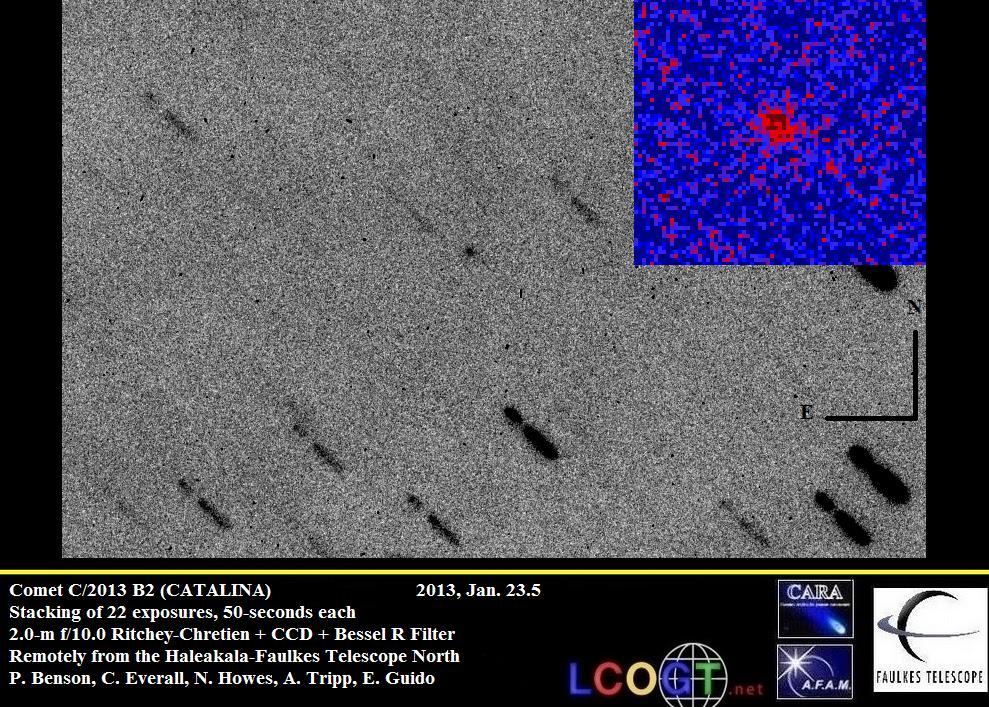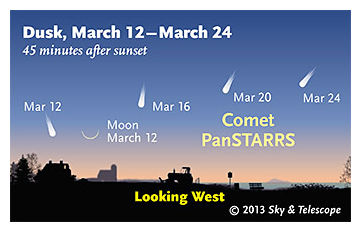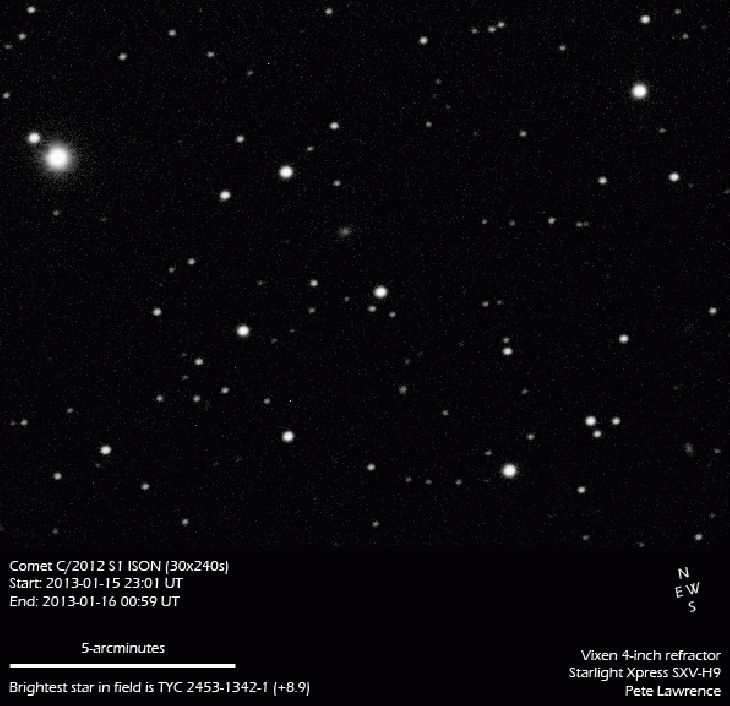Cbet nr.
3390, issued on 2013, January 23, announces the discovery of a new comet (discovery magnitude 18.9) on images taken by
J. A. Johnson with the Catalina Sky Survey's 0.68-m Schmidt telescope + CCD on January 16.2. The new comet has been designated
C/2013 B2 (CATALINA). The apparently asteroidal object posted on the Minor Planet Center's NEOCP webpage, has been found to show cometary appearance by CCD astrometrists elsewhere.
We performed follow-up measurements of this object, while it was still on the neocp. Stacking of 22 R-filtered exposures, 50-sec each, obtained remotely, from the
Haleakala-Faulkes Telescope North on 2013, Jan. 23.5, through a 2.0-m f/10.0 Ritchey-Chretien + CCD, shows that this object appears slightly diffuse compared to the nearby field stars of similar brightness and elongated toward PA 220.
Our confirmation image:

© Remanzacco Observatory/Philip Benson/Chris Everall
M.P.E.C.
2013-B84 assigns the following preliminary parabolic orbital elements to comet C/2013 B2: T 2013 June 30.59; e= 1.0; Peri. = 156.14; q = 3.75; Incl.= 43.56.

